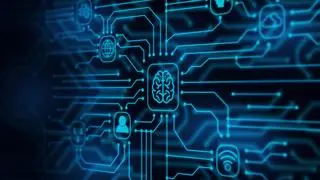Many cancer patients get cured and then have a relapse.
What causes this are the ‘cancer stem cells’ (CSC). Many of us are familiar with stem cells from cord blood, which, if preserved, can be used to regenerate body parts such as a damaged organ or a broken bone. CSC are similar — they help in generating cancer cells.
Drugs find it hard to eliminate CSC, because they proliferate rapidly. You would need to find out how they do that, so you can attack the root of the problem.
Two Indian medical researchers, Dr Arun Dharmarajan and Dr Sudha Warrier, have achieved this. Dharmarajan, who has held academic positions at Johns Hopkins School of Medicine, Baltimore, USA, and The University of Western Australia, Perth, is currently Vice-Principal of the Faculty of Biomedical Sciences and Technology, Sri Ramachandra Institute of Higher Education, Chennai. Dr Warrier is Dean and Professor, Manipal Institute of Regenerative Medicine, Bengaluru. Together they have discovered a ‘small molecule drug’, which they call SC501, to target CSC. ‘Small molecule drugs’ are a class of drugs that can easily enter a cell; pharma companies make them for targeted therapies.
Earlier, Dharmarajan had done research in an area called ‘wnt signalling’. In cell biochemistry, ‘signalling molecules’ convey genetic information from one cell to another.
These molecules may be simple gases or complex proteins. Some latch on to ‘receptors’ on the cell wall; others are capable of entering cells and latching on to receptors in the cytoplasm or on the wall of the nucleus. They pass on genetic information from one cell to another, much like saying, “Here, take this and make a thousand copies, and be quick.”
In a 2020 paper, ‘Biology and Enhancement of Skeletal Repair’, Dr Bruce Browner, et al, note that “wnt proteins form a family of highly conserved secreted signalling molecules that regulate cell-to-cell interactions”.
Now, CSC proliferate using the wnt pathway. Dharmarajan had earlier discovered that CSC using wnt proteins “are over-expressed”. Later, he and Dr Warrier developed the small molecule SC501, which, rather than attack CSC, guns down the wnt pathways to inhibit the growth of cancer cells. In other words, the small molecule is a ‘wnt inhibitor’; by destroying a feature specific to CSC, namely the ‘wnt pathway’, the molecule prevents the stem cells from increasing their tribe.
In addition, the SC501 starves cancer cells of blood by preventing angiogenesis or development of new blood vessels that supply to them. This it does by blocking a protein responsible for angiogenesis.
Dharmarajan and Warrier have applied for patent for SC501 and do not wish to divulge much about the compound, except to say that it is not a biomolecule. Dharmarajan calls it a “magic molecule” because it can potentially be used in the treatment of many other diseases, such as osteoporosis, diabetes and even neuro-degenerative ailments.
The researchers stress that SC501 is still in “pre-clinical stage”. It has to be produced in enough quantities for clinical trials before heading to mass production. For this, they are mulling a pilot plant, which could cost ₹1 crore.










Comments
Comments have to be in English, and in full sentences. They cannot be abusive or personal. Please abide by our community guidelines for posting your comments.
We have migrated to a new commenting platform. If you are already a registered user of TheHindu Businessline and logged in, you may continue to engage with our articles. If you do not have an account please register and login to post comments. Users can access their older comments by logging into their accounts on Vuukle.